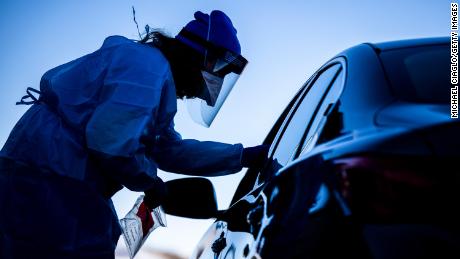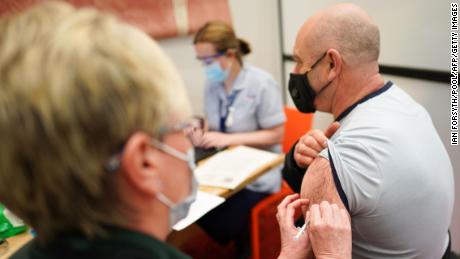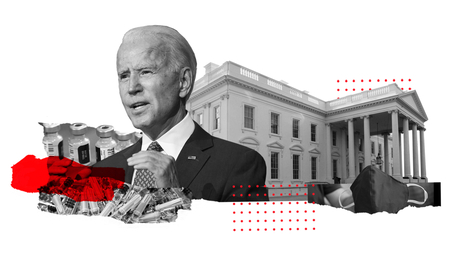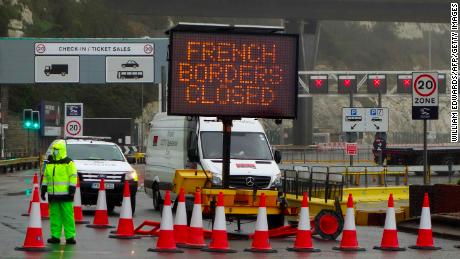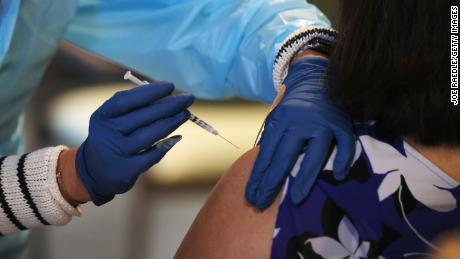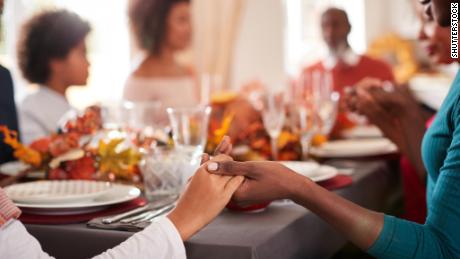Virologists predicted from the beginning that the coronavirus would change, and two more contagious variants are now spreading in the US
“This virus will continue for certain to evolve and mutate,” Dr. Anthony Fauci, director of the National Institute of Allergy and Infectious Diseases, said during a call with reporters on Friday.
Federal and state governments are racing to try to vaccinate the population, but even the most optimistic forecast suggests many, if not most, Americans will have to wait until summer to get immunized.
Is there any way to prevent the worst? Can better mask use, more testing, stricter social distancing help?
President Joe Biden’s very first executive order was a federal mask order — something affecting federal offices and contractors only, since he cannot tell states what to do. The US Centers for Disease Control and Prevention is looking into whether recommending double-masking might help. Several experts have recommended that Americans start wearing N95 masks — the hospital-quality face coverings that are still in such short supply.
There’s a clamor for more testing. The new administration has issued tighter testing requirements for international travel and is debating whether to require testing for domestic travel, also.
The new CDC director, Dr. Rochelle Walensky, says the arrival of the new variants means Americans must double down on all the things they are already being told to do — but that millions of Americans are still not doing.
“The emergence of variants underscores the need for public health action. First, get vaccinated when it’s your turn,” Walensky told a White House briefing this week.
“Second, wear a mask. Practice social distancing and wash your hands. And finally, now is not the time to travel. But, if you must, be safe and follow the CDC guidance.”
But public health experts are pessimistic that Americans are going to change their ways, one year into the pandemic. The Americans who are going to wear masks already are doing so. Those who can or are willing to stay home are already doing it. Lockdowns have been unpopular and local officials are not willing to enforce them, anyway.
“We have not been seeing governments taking action to apply cautionary measures as quickly as expected, and have incorporated that information into the modeling,” said IHME director Dr. Christopher Murray in releasing his team’s latest bleak forecast. “Without measures to control the spread of the disease, mobility remains higher and transmission is more likely.”
Deaths would stay lower if Americans simply wore masks and stayed home more. If most people followed social distancing and masking guidelines, 30,000 fewer people would die by May 1, the IHME said.
There’s an argument for that, says risk communication expert Peter Sandman.
“It might be easier to sell new precautions than the same old ones. And maybe that’s why double masks are getting so much attention in recent days,” Sandman said.
But Murray doesn’t think people will go for it. Neither does Michael Osterholm, the director of the Center for Infectious Disease Research and Policy at the University of Minnesota.
“We have got a Category 10 hurricane staring at us. People don’t understand that,” Osterholm told CNN.
Osterholm is skeptical that better masks, or more masks, or double masks, will help.
“People assume more is better,” he said. But most people don’t even wear masks correctly in the first place, leaving their noses uncovered, or allowing air to flow in and out around the sides.
“That’s the first thing. Wear them correctly. But people think, ‘if I just put more on then I suddenly am more protected.’ And that’s just not the case.”
Extra layers may trap more particles, but they also make the mask uncomfortable, he pointed out. “But if you put a second mask on, now the air is harder to suck through. At that point, it just leaks out of the sides,” he noted.
The theory that better masks could slow the pandemic is sound, but it doesn’t work in real life, Osterholm said.
“If we had an N95 for everybody, if everybody really did use an N95 effectively, we really could have a considerable impact on this in four weeks. But I’m dreaming.”
There’s now a hard core of anti-maskers. “There is a group of 25 or 30% or more who see wearing a mask as shameful and they won’t. These are the same people who, if you mailed two N95s to their homes, they are not going to use them,” he said.
The same goes for increased testing.
“The very people who say if we just tested everybody and did home testing, we could really cut transmission way down — my answer to that is of course most home testing…do you think the people who are going out to bars and the people who are exposing themselves in large groups are going to take a test?” Osterholm asked.
“The people who don’t leave their homes — they will. They’ll test themselves every day when they don’t need to.”
As for lockdowns, they are not only unpopular — they don’t work, said Amesh Adalja, a senior scholar at the Johns Hopkins Center for Health Security.
“There’s a danger when you do this,” Adalja told CNN.
“You say, ‘No, you cannot go eat in a restaurant, so instead it’s ‘Let’s all go to Jimmy’s house and have pizza and sit around and watch the football game together. Then they are all squished together and yelling and screaming, which is not, probably, going to happen in a restaurant where you are all spaced, where you have got people watching you,” he said.
“If you tell people never let anybody into your house, they are not going to follow that.”
Much of the spread, research indicates, is happening at gatherings such as weddings, holiday celebrations, high school sports and other community events.
That’s where Adalja does think that better and more frequent messaging can help.
“It’s much more about, can you open the windows, can you do this outdoors, make sure that nobody you are inviting over is waiting for a test result is part of a contact trace investigation. That kind of approach is better than saying never mix with anybody outside your house. They’re just not going to do it,” he said.
The longer the pandemic goes on, the more careless people are likely to get. Fear of new variants may be as likely to make people freeze up or give up as to react more responsibly, said Sandman, the risk communications expert.
“Like the original arrival of the Covid-19 virus in the US, this will be, once again, an exponential change,” he said. “And once again, the inability of the human psyche to truly understand what ‘exponential’ means will doom us to being unprepared — unprepared psychologically as well as practically,” he added.
And all it takes is one slip, said Osterholm.
“Like pregnancy — people say ‘well, we took precautions most of the time.’ With this one, failure is not an option.”
And people are going to struggle with the idea of new variants posing a fresh threat, Sandman said.
So is vaccination the best and only hope? Fauci seems to think so. “The best way to prevent further evolution of a virus is to prevent it from replicating and you do that by vaccinating people as quickly as you can,” he said.
But the hope of vaccines may, paradoxically, encourage people to ease up on other measures. just as they should be doubling down.
“The same old precautions — masks, social distancing, etc. — are about to become even more important,” Sandman said.
“Selling that means trying to get through to people how exponential growth works. Somehow, we need to become much more cautious, just as imminent vaccination is tempting us to become much less cautious instead.”
![]()




